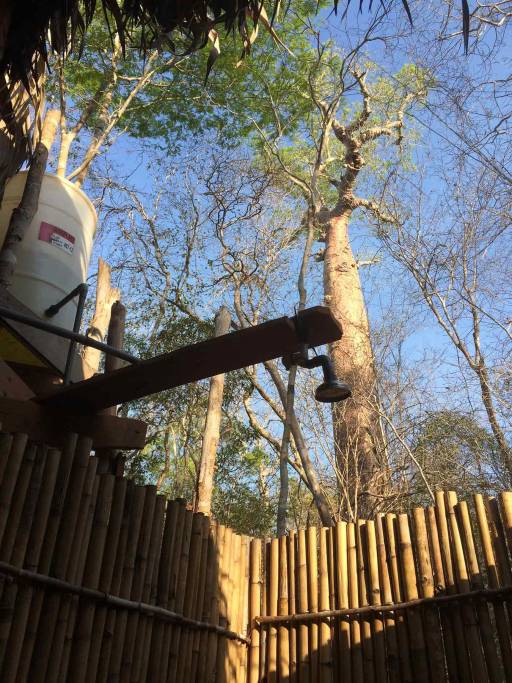My holiday in Madagascar was an amazing visit to one of the world’s most unique and exciting places. Between its teeming capital city, small coastal villages, brilliant national forests, distinctive wildlife, and open, friendly people, Madagascar gave me so much to appreciate and learn on even a short visit. This series describes my Malagasy holiday from beginning to end. Mankafy! If you are starting in the middle, CLICK HERE to go to the first post.
Today we spent most of the day in the car again, driving back towards Morondava. The journey was just as long, but since we had taken the same roads a few days before it was admittedly much less interesting. One thing that really stuck out on the drive was just how much the natural habitats are being destroyed throughout the region.
Most of the country was covered in thick, lush forest not too long ago, filled with countless species of trees and wildlife. The richness of the forest still exists in Madagascar’s national parks and reserves, and I saw this firsthand surrounding the Tsingys. Now, much of the unprotected land has become barren and empty. The local population uses the land for survival, but unfortunately not in a very sustainable way. Forests are cut and burned to make charcoal and to create grazing grounds for zebus (cattle). Then the land is burned again and again to encourage grass to grow each year for grazing. When the land inevitably becomes inhospitable, people move on to a new area and start the cycle again.
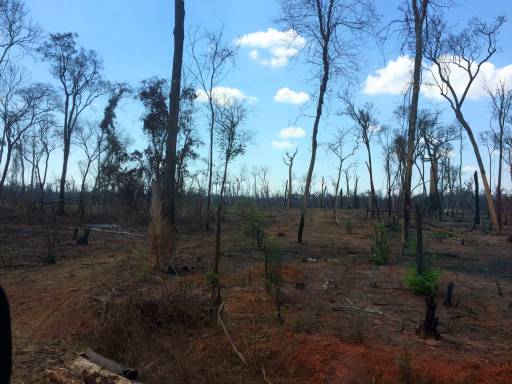
This cycle was clearly visible on our journey. The smell of smoke always hung in the air or was visible in the distance, and at one point a fire was being burned right at the side of the road we drove on. Forests of tree stumps went on for miles with nothing else able to grow or live. Baobab trees which looked hundred of years old stood by themselves amongst the ruins, all black and charred at the bottoms. Rivo said that he had driven the same road not even a month before and could notice the difference by how much had been cut and burned in a short time. Even though this is being carried out by people who do what they must to survive, it’s very sad to think about how many trees, birds, lemurs, lizards, etc. etc. have lost their habitat or even lives for this purpose, and the fast pace of the devastation is alarming.
Having seen so much destruction along the way, I was glad to arrive in the Kirindy Reserve in the late afternoon. This reserve protects a dry deciduous forest for the purposes of sustainable logging, scientific research, education, and tourism. It’s also home to some popular endemic species including several lemurs, the giant jumping rat, and the fossa, Madagascar’s largest carnivorous mammal. My hotel for the night, Camp Amoureux, is in the same forest.
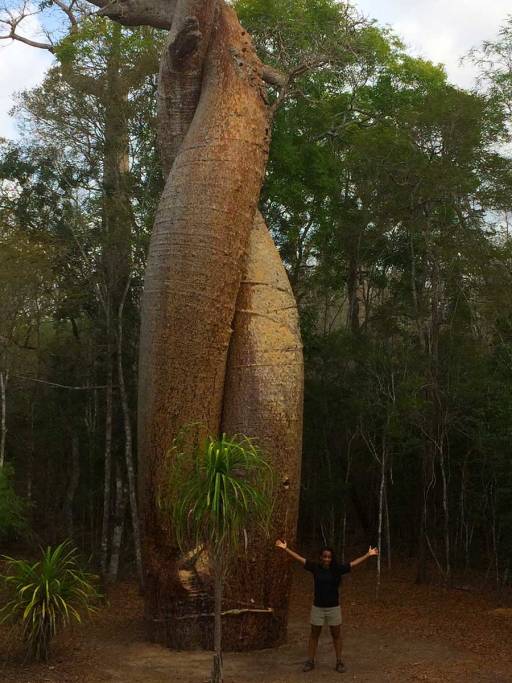
Once I got out of the car and saw my room, I again really started to wish I hadn’t come on this trip alone. I found myself in the middle of the forest facing a dome tent on a raised platform with an outdoor toilet and a barrel of water for a shower 😅 . The camp’s tents were really spread out from each other so it really felt like I was completely alone. With images of lemur-eating fossa and jumping rats in my mind, and the thought of sleeping on the floor of the tent, I was definitely freaking out!
I had a few hours to kill before the evening’s night walk, and it actually helped settle my nerves. Sitting alone in the forest outside my tent doing nothing but watching and listening to my surroundings helped me appreciate that it’s actually quite beautiful. Knowing that this goes on like this whether I’m here or not was very peaceful. Two little birds taking a dust bath next to my tent and then waddling along all the way around. An iguana taking its place back at the bottom of the tree (it had scurried up when I arrived earlier). And the sound—not crickets exactly but a constant chirp-whirring of some insect is the constant background. The wind rustling the tree leaves and the thatched roof of my tent cover. I felt much better and got excited to go exploring with a guide.
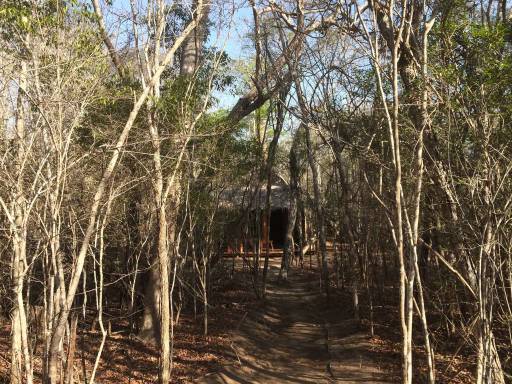
Turns out there are no fossa or jumping rats in this part of the forest—thank goodness! Instead we saw a bunch of tiny cute things 😄. There were little itty bitty lizards maybe 3-4 inches long—striped with orangey-brown and yellow and funny knobby heads. There were also tiny nocturnal lemurs which were so cute! We saw the mouse lemur, which looked just like a mouse except for its tail and little lemur ears. We also saw the Madame Berthe, which was auburn and more lemur looking. It’s also the smallest primate in the whole world!
Scouting these animals in the pitch black night was really difficult—I wouldn’t have seen anything if it weren’t for the local guide and Rivo. We used headlamps to scan the trees, looking for the mirror-like reflection of eyes in the branches. But since light attracts bugs and I’m not a big fan of having things fly into my face (!), I kept the light off and left the searching to the guides.
At one point there was a third lemur whose name I can’t remember, but the guide picked up a cicada that flew into my hair (awesome) to get its attention. By holding its wing, the cicada made a real racket trying to escape. The guide held it up to a tree to try to entice the lemur to come eat it and it almost worked! That cute little thing was jumping from tree to tree trying to figure out how to get the food without coming too close to the giant humans. In the end I guess we were just too big and scary for it to make a move, but it was fun to see it try.
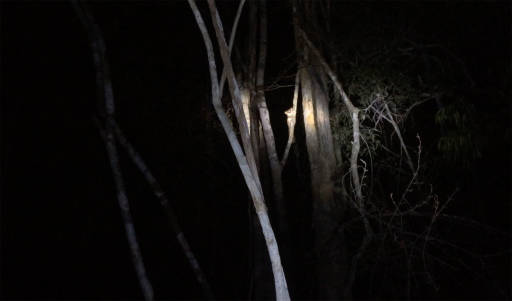
The night walk turned out to be really exciting and much less scary than I was anticipating. With another forest visit planned for the next day, it was a huge relief!
